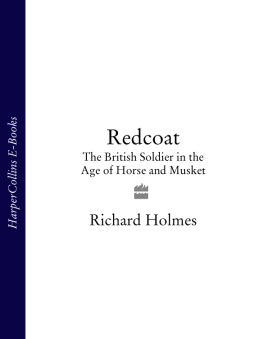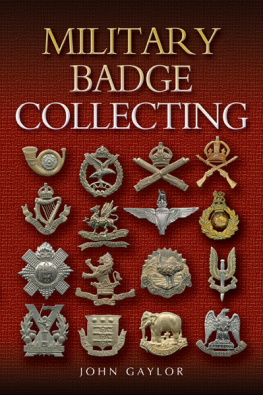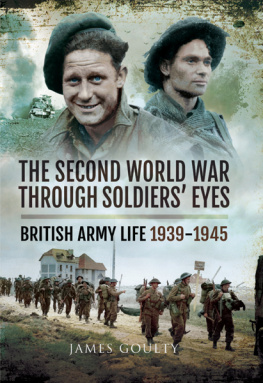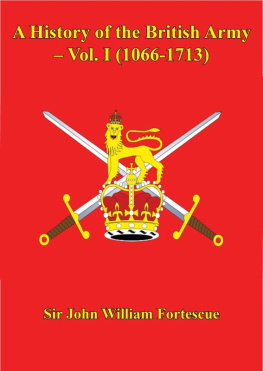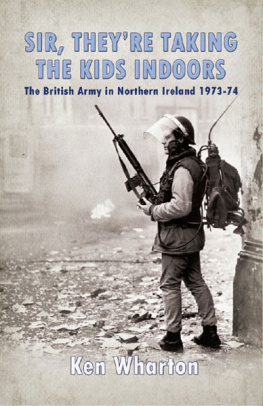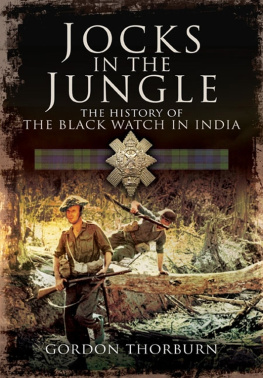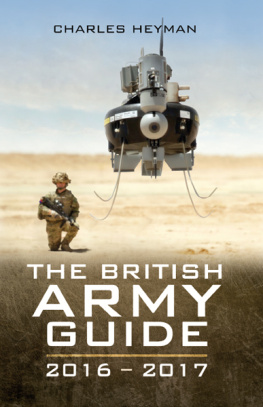
SAUL DAVID
All the Kings Men
The British Soldier from the Restoration to Waterloo
VIKING
an imprint of
PENGUIN BOOKS
By the same author
NON-FICTION
Churchills Sacrifice of the Highland Division
Mutiny at Salerno
The Homicidal Earl
Military Blunders
Prince of Pleasure
The Indian Mutiny
Zulu
Victorias Wars
FICTION
Zulu Hart
Hart of Empire
For my darling Molly
Illustrations
Section One
. Fifteenth, or the Yorkshire East Riding Regiment 1685, hand-coloured print by C. H. Hodges, after Edward Dayes
. Captain Robert Parker, The Royal Regiment of Ireland, c. 1720, oil on canvas by Alexis Simon Belle
. Marlborough in Armour, hand-coloured copper engraving by John Bowles, 1722.
. Glorious Battle of Blenheim, August 13th 1704, hand-coloured engraving by G. Scotin after Antoine Benoist
. Blow Your Match, from The Granadiers Exercise of the Granade, by Bernard Lens, 1735
. Throw Your Granade, from The Granadiers Exercise of the Granade
. The March of the Guards towards Scotland in the year 1745, coloured engraving by Luke Sullivan after William Hogarth, 1750
. The Battle of Culloden, 16 April 1746, coloured engraving by R. Sayer and J. Bennett, c. 1780
. William, Duke of Cumberland, oil on canvas by David Morier, c. 1750
. A View of the Taking of Quebec, 13 September 1759, hand-coloured engraving by Carrington Bowles, 1795
. Death of General Wolfe, oil on canvas by Benjamin West
. British Grenadier and Country Girl, c. 1760, colour plate by Seymour Lucas, 1790
. The Kings Shilling, oil on canvas by unknown artist, c. 1770
. The Military Contrast, coloured etching by unknown artist, 1773
. Retreat of the British from Concord, April 1775, hand-coloured engraving by James Smillie after Alonzo Chappel
. The Battle of Bunker Hill, photomechanical print after E. Percy Moran, 1909
. Sir William Howe, Commander in Chief of His Majestys Forces in America, coloured mezzotint by John Morris after Richard Purcell, 1777
. George Washington Crossing the Delaware River, photomechanical print after Henry Mosler, c. 1912
. The Battle at Princeton, hand-coloured engraving by J. Rogers after John Trumbull, 1857
. Encampment at Valley Forge: Washington and His Wife Visiting the Troops, hand-coloured engraving by A. B. Walter after Christian Schuessels, 1860
. English Barracks, coloured aquatint by T. Malton after Thomas Rowlandson, 1788
. A Field Day in Hyde Park, coloured aquatint by T. Malton after Thomas Rowlandson, 1789
. Soldiers Attending Divine Service, coloured aquatint by Schutz after Thomas Rowlandson, 1798
Section Two
. Wellingtons First Encounter with the French, c. 1785, chromolithograph after G. W. Joy
. Arthur Wellesley, later the Duke of Wellington, miniature watercolour on ivory by Richard Cosway, 1808
. The Storming of Seringapatam, 3 May 1799, watercolour Robert Ker Porter, 1799
. The Battle of Corunna, 17 January 1809, aquatint by M. Dubourg after W. Heath, undated
. Royal Artillery Drivers, aquatint by J. C. Stadler after Charles Hamilton Smith, c. 181215
. British Riflemen, aquatint by J. C. Stadler after Charles Hamilton Smith, c. 181215
. The Battle of Salamanca, 22 July 1812, coloured aquatint by R. Lawrie after William Heath, 1821
. The Battle of Vitoria, coloured etched caricature by and after George Cruikshank, 1813
. Camp Scenes, etching by and after W. H. Pye, 1803
. Soldiers on a March, coloured etching by G. M. Woodward after Thomas Rowlandson, 1811
. Napoleon as First Consul, coloured engraving by unknown artist, c. 1801
. Napoleon Entering Paris, 20 March 1815, hand-coloured etched caricature by unknown artist, 1815
. Narrow Escape of Prince Blcher, watercolour by Charles Turner Warren, 1818
. The Duke of Wellington and the Most Distinguished Officers at the Battle of Waterloo, coloured aquatint by W. T. Fry and T. Sutherland after William Heath, 1817
. Interior of Hougoumont during the Battle on the Glorious 18th of June, 1815, coloured aquatint by T. Sutherland after A. M. S. (unidentified artist), 1816
. The Battle of Waterloo, June 18th, 1815, watercolour by Franz Joseph Manskirch, 1815
. Clash of Prussian and French Infantry, watercolour by Charles Turner Warren, 1818
. View of the Village of Waterloo, the Day after the Battle, 19 June 1815, coloured aquatint by Thomas Sutherland after A. M. S. (unidentified artist), 1816
. The Chelsea Pensioners Reading the Waterloo Dispatch, oil on wood by David Wilkie, 1822
Illustration Acknowledgements
The author and publishers are grateful to the following for permission to reproduce the following illustrations:
National Army Museum for nos.
Maps
. Battle of Sedgemoor, 6 July 1685
. The March to the Danube, May to July 1704
. The Schellenberg, 2 July 1704
. Blenheim, 13 August 1704
. The Siege of Quebec, June to September 1759
. Quebec and the Heights of Abraham, 13 September 1759
. Lexington and Concord, 19 April 1775
. New York and Environs, August to October 1776
. Howes Philadelphia Campaign, December 1776 to August 1777
. Battle of Brandywine, 11 September 1777
. Burgoynes Northern Campaign, June to October 1777
. Wellesleys Indian Campaigns, 1799 to 1805
. Siege of Seringapatam, April to May 1799
. Battle of Assaye, 23 September 1803
. The Peninsular War, 1808 to 1813
. Battle of Vimeiro, 21 August 1808
. Battle of Talavera, 27 to 28 July 1809
. Battle of Salamanca, 22 July 1812
. Battle of Vitoria, 21 June 1813
. Waterloo and Environs, June 1815
. Battle of Waterloo, 8 p.m., 18 June 1815
Prologue
In the early hours of 6 July 1685, as the Earl of Fevershams royal army slept in its camp on the field of Sedgemoor in Somerset, a large rebel force crept ever closer, determined to murder the kings soldiers in their tents. The rebels most of whom were solid West Country dissenters were led by the handsome and staunchly Protestant Duke of Monmouth, the 36-year-old illegitimate son of the late King Charles II and his mistress Lucy Walter. An experienced soldier who had served with distinction in the Third Anglo-Dutch War of 16724, Monmouth had long maintained that his parents were married at the time of his birth, making him and not his uncle, the openly Catholic James II, the rightful heir to the throne.
But his father had failed to support his claim, causing Monmouth to throw in his lot with the ultra-Protestant Rye House plotters who had tried, in 1683, to assassinate both royal brothers and make him king. They failed and Monmouth was banished to Holland, remaining there until his fathers death on 6 February 1685. Determined to seize the throne, he landed at Lyme Regis on 11 June with barely 150 followers, proclaiming his uncle a Catholic usurper. West Country puritans rallied to his cause and at one point his army numbered 6,000 men. But after he had failed to take Bristol, and with his support ebbing away, he decided to risk all in the attack on the royal camp at Sedgemoor.
Though his force had shrunk to just 600 cavalry and 3,000 infantry (in five colour-coded regiments), it still outnumbered the Earl of Fevershams royal army of 750 horse, 1,900 infantry and 200 artillerymen sent to oppose it. But in every other respect Monmouths force was inferior: it had fewer cannon, four to the royalists twenty-six; it
Next page

